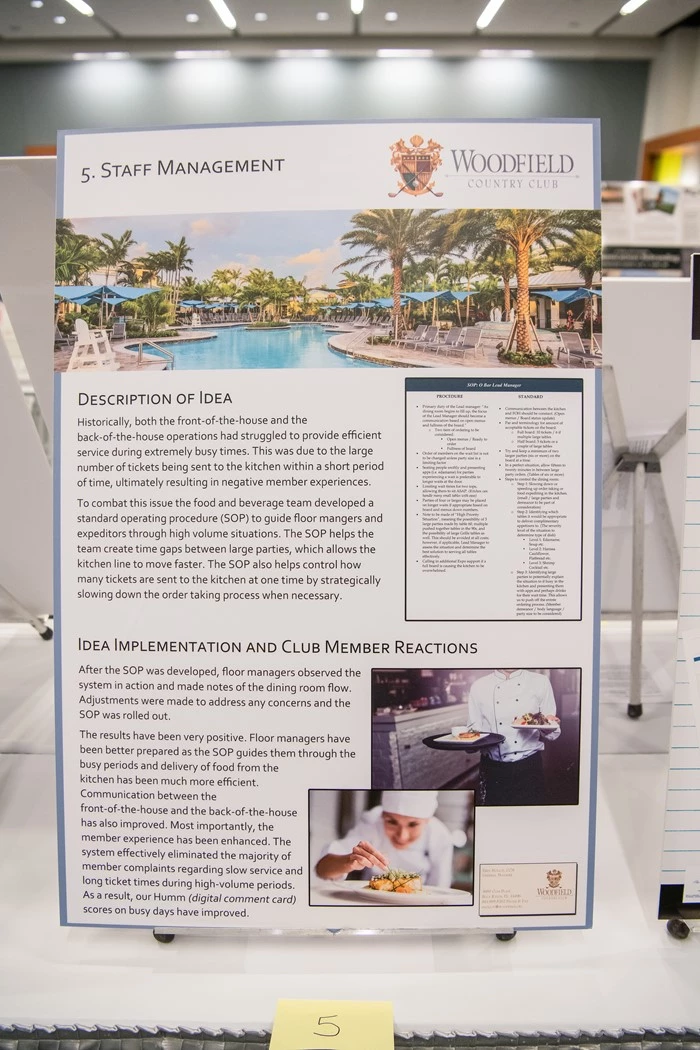Idea Fair
Standard Operating Procedure
How has this idea enhanced your club's operation, etc.?
Historically, both the front-of-the-house and the back-of-the-house operations had struggled to provide efficient service during extremely busy times. This was due to the large number of tickets being sent to the kitchen within a short period of time, ultimately resulting in negative member experiences. To combat this issue the food and beverage team developed a standard operating procedure (SOP) to guide floor mangers and expeditors through high volume situations. The SOP helps the team create time gaps between large parties, which allows the kitchen line to move faster. The SOP also helps control how many tickets are sent to the kitchen at one time by strategically slowing down the order taking process when necessary.
How was this idea implemented, and what have been the club members' reactions?
After the SOP was developed, floor managers observed the system in action and made notes of the dining room flow. Adjustments were made to address any concerns and the SOP was rolled out.
The results have been very positive. Floor managers have been better prepared as the SOP guides them through the busy periods and delivery of food from the kitchen has been much more efficient. Communication between the front-of-the-house and the back-of-the-house has also improved. Most importantly, the member experience has been enhanced. The system effectively eliminated the majority of member complaints regarding slow service and long ticket times during high-volume periods. As a result, our Humm (digital comment card) scores on busy days have improved.


About the author
Eben M. Molloy, CCM